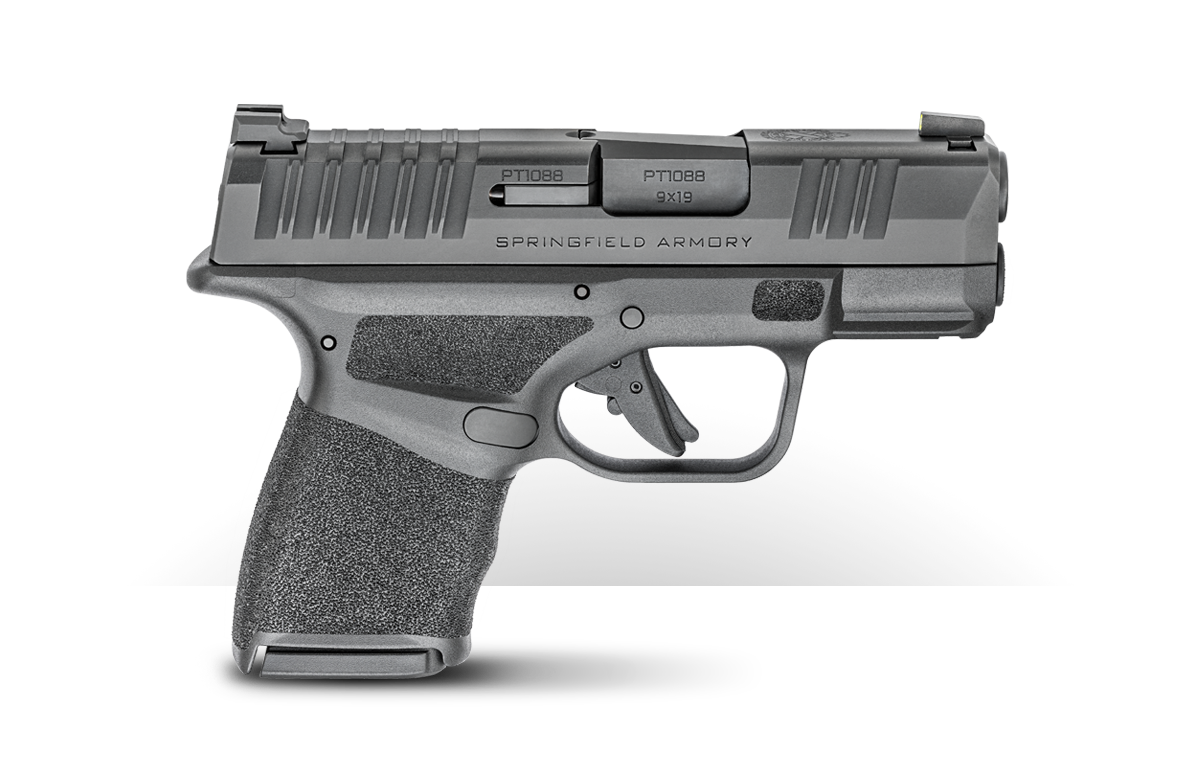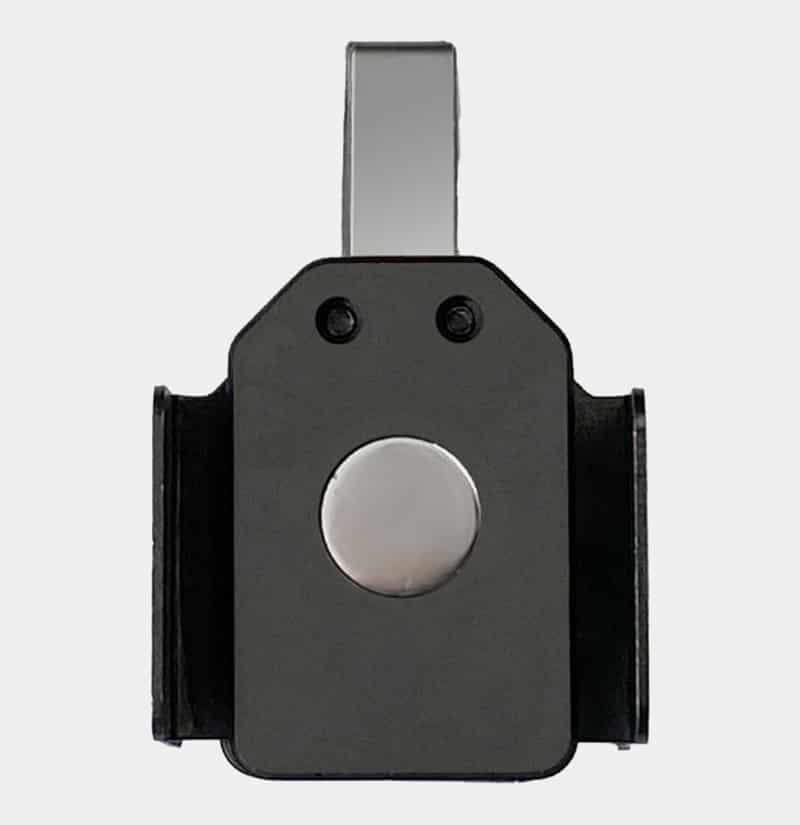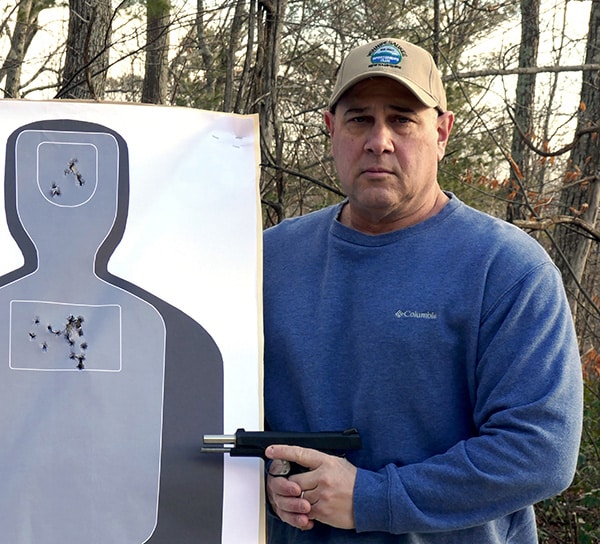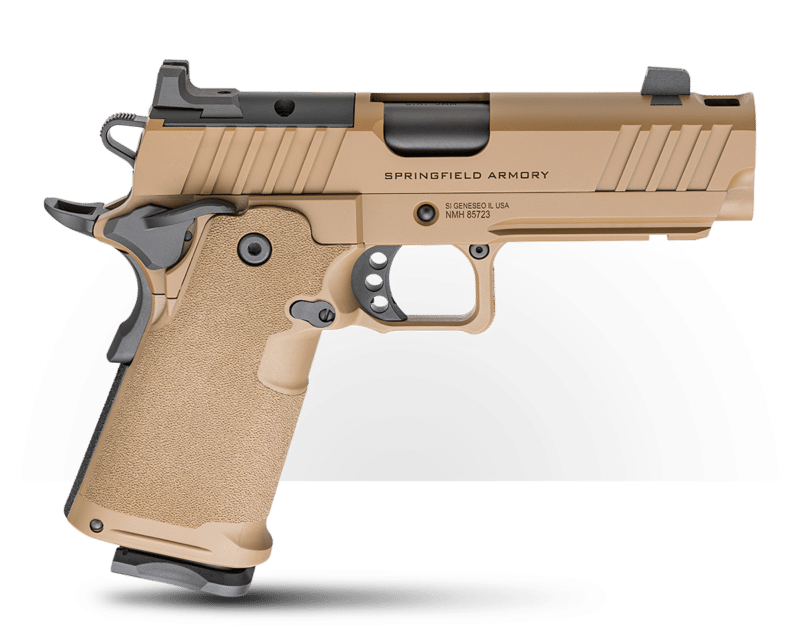Concealed Carry Options — Alternative Handgun Concealment for Women
September 11th, 2024
6 minute read
In my previous article about the best daily carry gun, I explained that once someone decides to include a firearm in their self-defense plan and be their own “first responder,” they should carry it wherever it is legal to do so. At home, on vacation, at work, when out to dinner with friends and family — even when exercising.
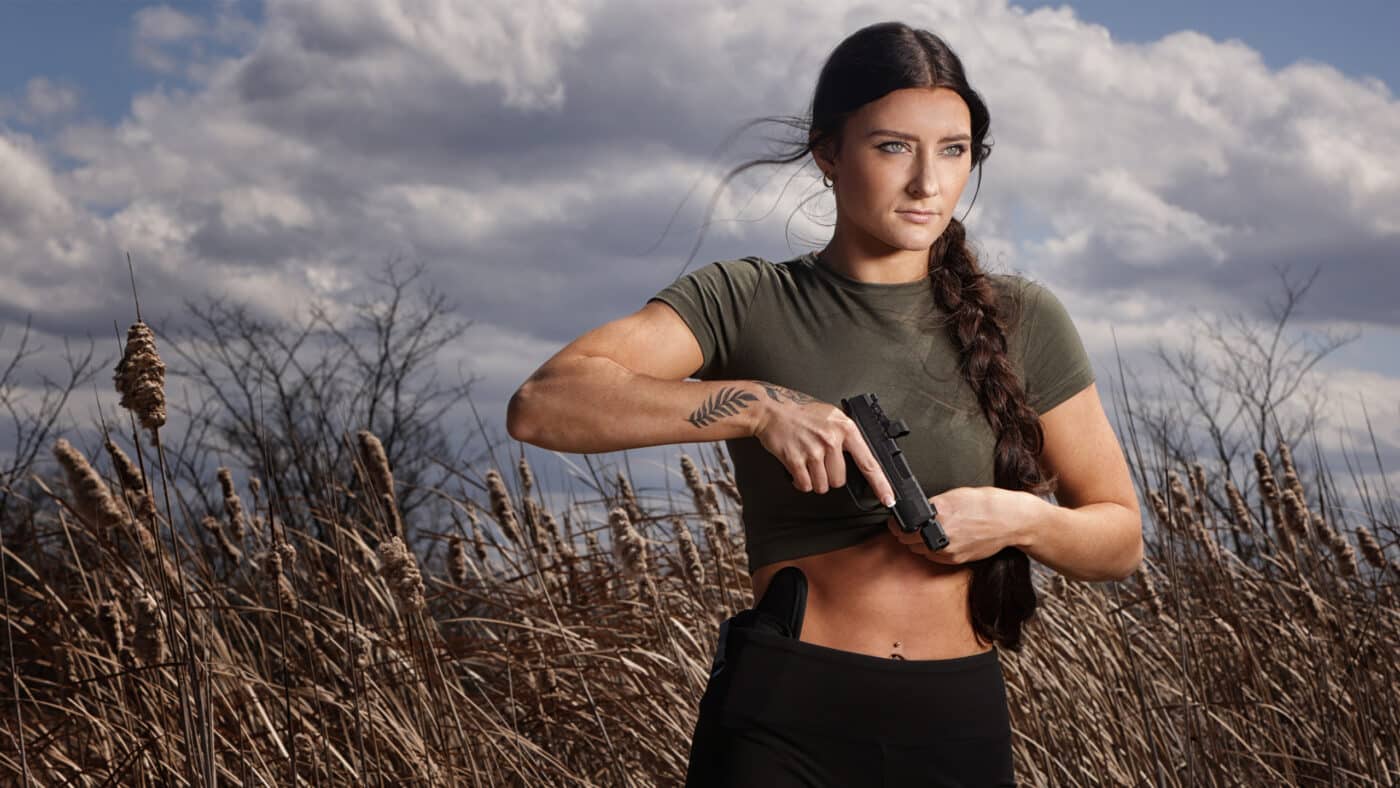
If a person could predict, without a doubt, when and where a criminal attack would occur — the prudent person would just stay home that day or avoid the specific place where the crime is predicted to occur. Law-abiding citizens do not seek out trouble, but also cannot predict when trouble will find them.
Your Choice in Concealed Carry Options
Some citizens who obtain licenses to carry do not expand their training beyond that which is required to obtain the license. In most states, the required training is a “safety class” that is in no way related to carrying a pistol in public. Not building on basic firearms safety training with classes that are appropriate to carrying a gun in public is a huge mistake in my opinion.
The number of “Constitutional Carry States” has grown significantly, and more people than ever are carrying guns — which is a good thing to my mind. However, some are going about their lives without what I consider as much training as they could have, and that is unwise.
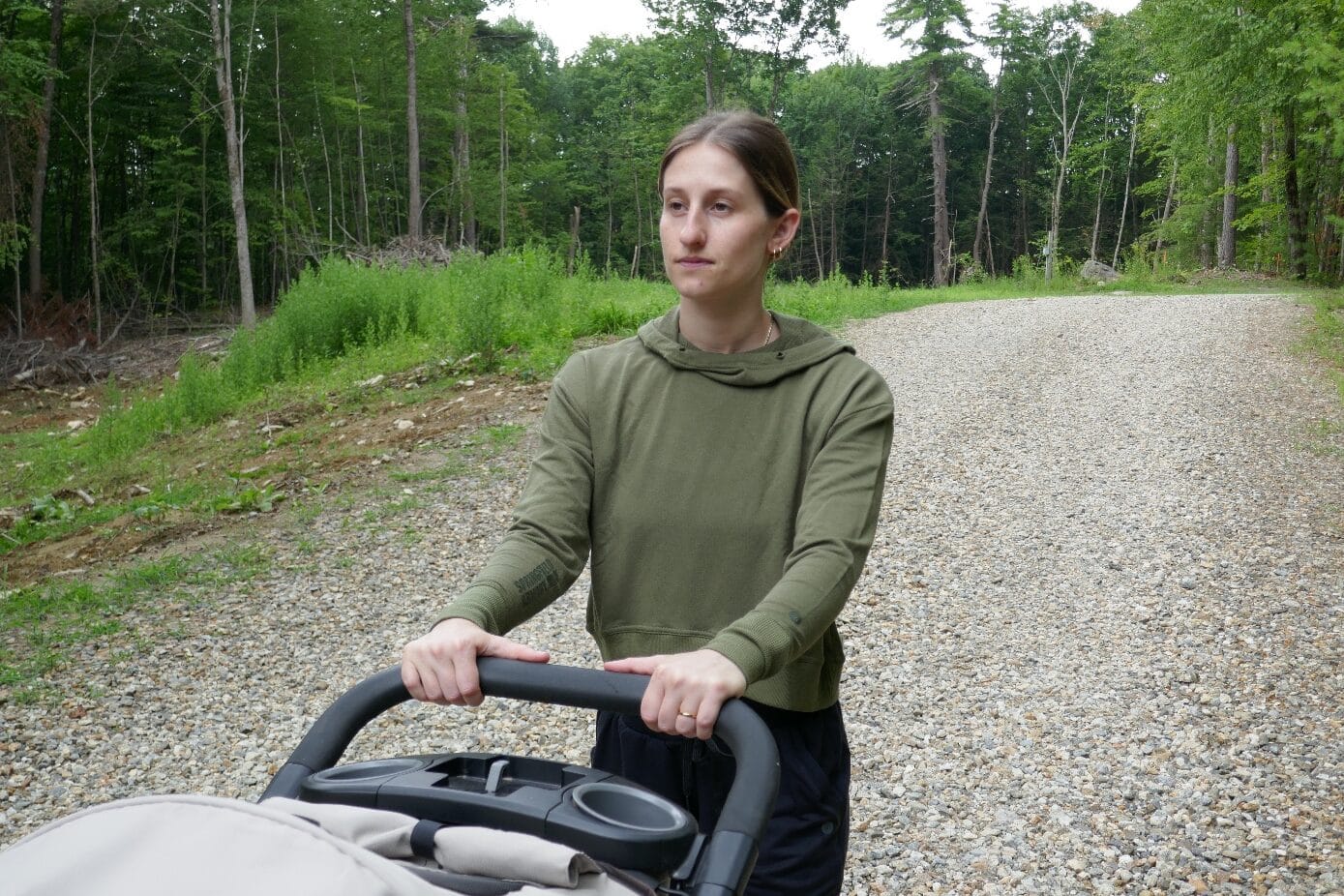
Let me state this here — I remain strongly opposed to any type of government-mandated training, permitting or licensing to own or carry a firearm. However, it is my long-held view that responsible gun owners should voluntarily seek out training that is appropriate to their needs.
Citizens who regularly think about personal safety seek to expand their training. Unfortunately, many are often “stuck” with a “one-size-fits-some” program. Most of these programs are built around a strong side belt holster and a mid-sized or even a full-sized pistol. Many trainers are very experienced, come from law enforcement or military backgrounds and teach important skills such as shooting from unconventional positions, shooting while moving, shooting fast and accurately and the proper use of cover and concealment. Some instructors even cover the legal aspects of the use of deadly and non-deadly force as it applies to private citizens.
In my experience, though, few instructors teach people how to carry and draw a gun from a position other than from the dominant side hip. This training may work for males who normally carry on their hip — but what about females?
A New Look — Options for Women Who Carry
In my experience, many women dislike strong-side belt holsters because their hips’ shape makes an inside-the-waistband (IWB) holster uncomfortable. On the other hand, outside-the-waistband (OWB) holsters often “print” through women’s clothing.
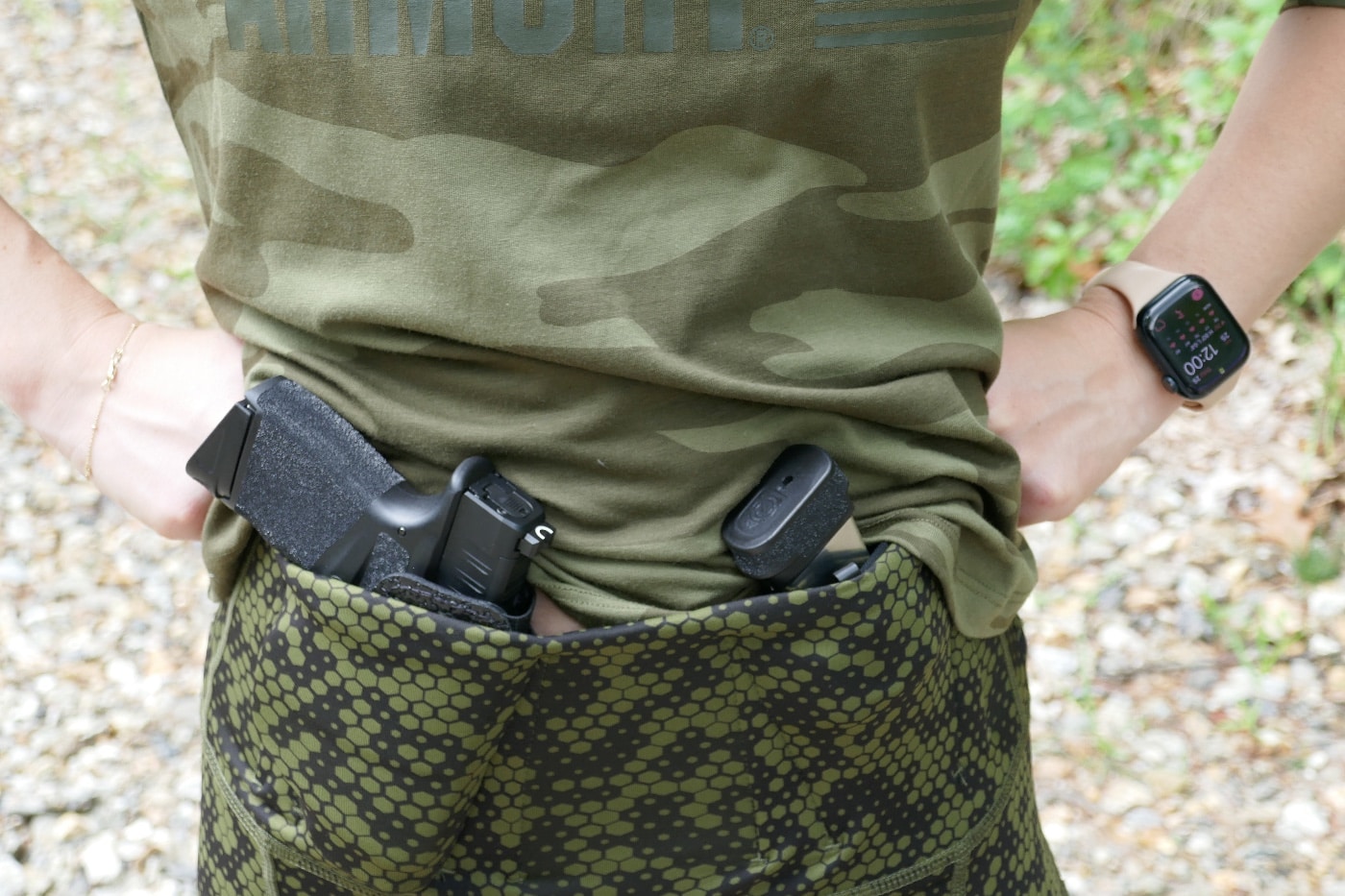
The Springfield Armory Alexo Athletica line offers an excellent line of carry-centered clothing for both men and women. Pursuant to our topic here, the women’s products offer many concealment options.
The Alexo Athletica line includes women’s leggings with built-in pouches to carry a small gun such as a Hellcat. Each pair has more than one “gun pouch”, to allow carry in a comfortable and accessible location. When paired with a DeSantis Flextech pocket holster, the trigger is properly protected.
I’m acquainted with a young mother who carries a Springfield Armory Hellcat and have been helping her out with some self-defense training. The Hellcat is small enough to conceal well and packs substantial firepower due to the availability of 11-, 13- and 15-round magazines. The Alexo Athletica line of clothing works well for her because the Hellcat weighs just over a pound and fits neatly in the appendix carry position.
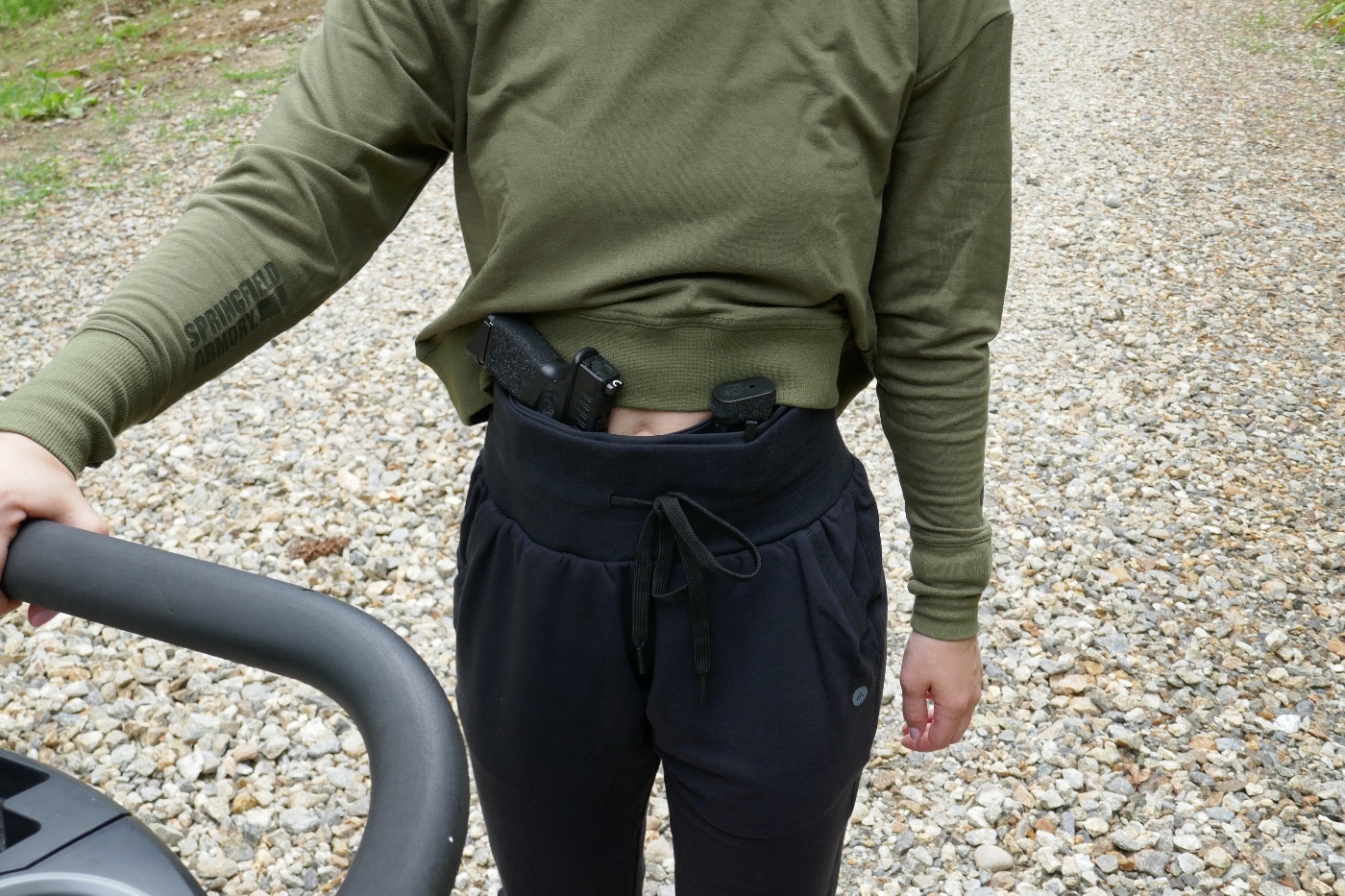
Drawing and presenting the pistol for her came relatively easy: in one day I was able to teach her these lifesaving skills. Reholstering is the same as for other pocket-style holsters. The loaded Hellcat is inserted into the DeSantis Flextech, and then the entire package is placed into the built-in pouch sewn into the Alexio Athletica leggings or pants. This lady is well-prepared; she carries a spare magazine in a NeoMag, clipped to one of the pouches on the opposite side of her body.
Packing It In with Off-Body Carry
Some women prefer to use a “holster purse” because it accommodates a full-size pistol, such as a Springfield 1911 TRP. In my experience, they like pistols like this due to their weight, as is easier for many to shoot well. Now, this type of carry requires the caveat that — unlike a pistol in a holster on your body — you must never release control of that bag since it contains a firearm.

Holster purses have a pocket for a pistol that is accessed separately from the main compartment. Most quality purses intended for carrying a firearm have a strap that sandwiches a piece of metal cable between leather or fiber to prevent the purse from being violently torn away from the owner.
Drawing a pistol from a holster purse is very different than drawing from “on body” carry — including the Alexo Athletica leggings. The purse needs to be carried so that the concealed pistol points in a safe direction and, when needed, repositioned so that it is pointed at the threat. The user must reach inside, get a firing grip on the pistol and then use the support hand to pull the purse away from the pistol after having manipulated the zipper to open the pouch. In this mode of drawing, the purse ends up on the support side of the body and the pistol is pointed at the threat without crossing anyone or anything else.
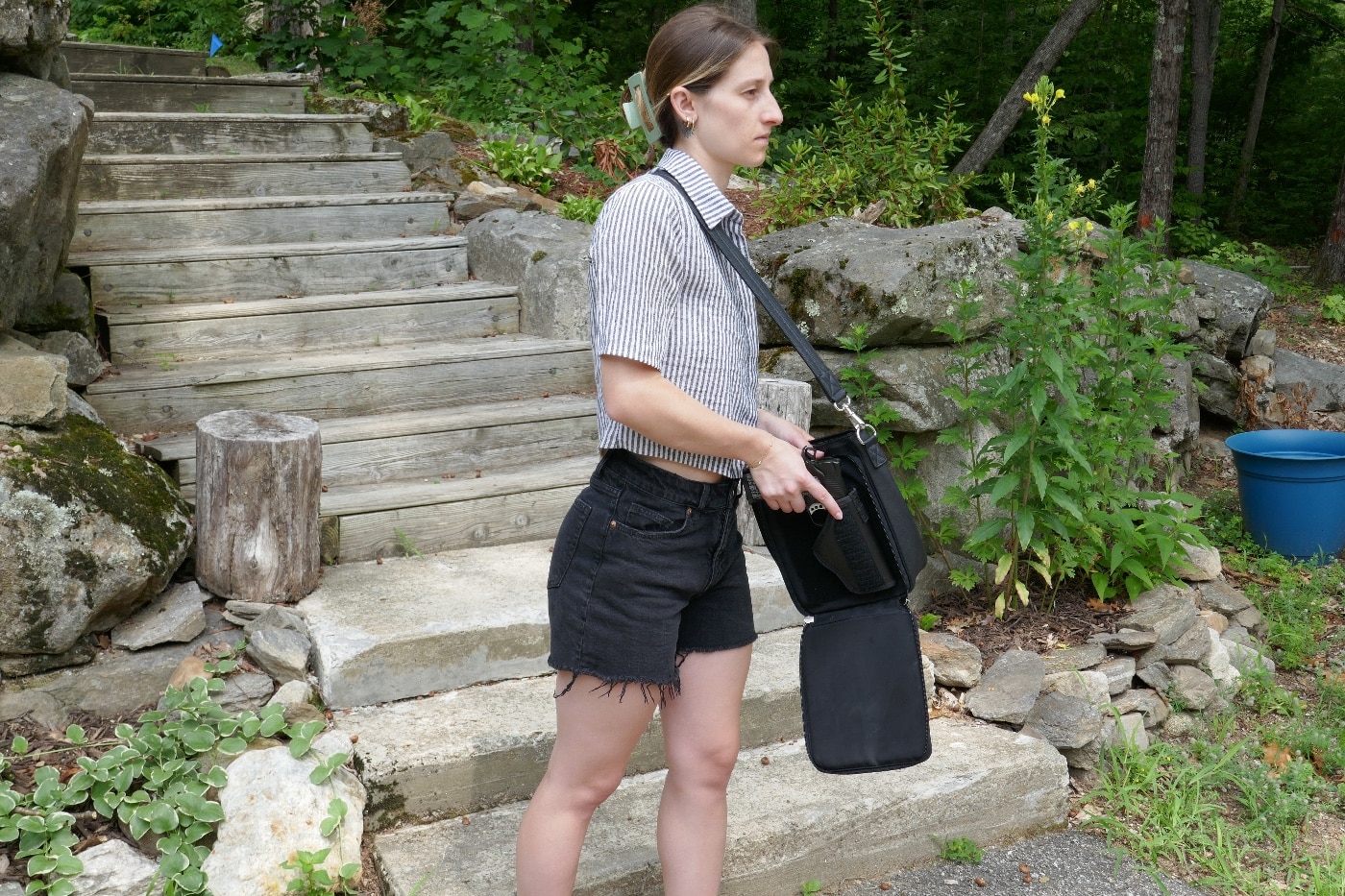
This technique must be practiced with an unloaded gun — guided by a qualified firearms instructor — until it is reflexive. Once the draw has been perfected, then and only then should the trainee move on to live-fire practice using the holster purse with their preferred carry gun.
As noted, the trade-off of using a Holster Purse is that it can never be put down as long as there is a firearm in it. Not in a shopping cart, not on an empty chair in a restaurant — never. Those who carry a gun should never lose (or give up) control of their firearm, and a firearm should never be left where unauthorized people may be able to grab it.
Final Thoughts on Your Concealed Carry Options
When I work with someone who has requested specialized training, I spend time learning about their lifestyle, daily activities and which types of carry methods they intend to use and why. I also ask about any other training they may have so I can get an idea of what if any, basic pistol handling skills they may have already learned.
Once I have learned as much as I can, I develop an individualized training plan. It is best to always start off with an unloaded pistol and practice drawing without the use of a cover garment. Once the draw stroke has been mastered AND my student can place accurate hits on a silhouette target from three to 15 yards, we incorporate drawing from concealment.
Most carry methods are not hard to master, but in order to properly learn these life-saving skills, gun owners should seek out training from an experienced and well-qualified instructor to learn how to draw and aim a pistol from someplace other than a holster on a belt on the dominant side of the body.
Editor’s Note: Please be sure to check out The Armory Life Forum, where you can comment about our daily articles, as well as just talk guns and gear. Click the “Go To Forum Thread” link below to jump in and discuss this article and much more!
Join the Discussion
Featured in this article
Continue Reading
Did you enjoy this article?

 104
104





